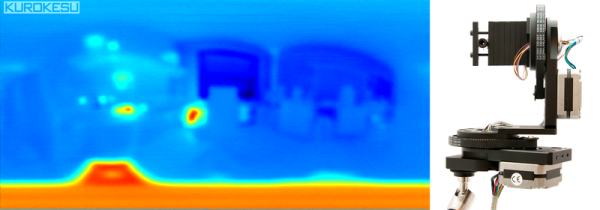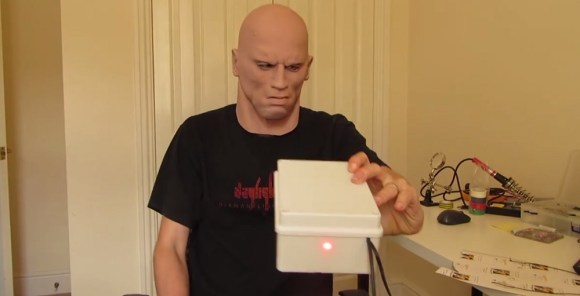Inspiration can strike from the strangest places. Unearthing a forgotten Melexis MLX90614 thermopile from his ‘inbox,’ [Saulius Lukse] used it to build a panoramic thermal camera.
[Lukse] made use of an ATmega328 to control the thermal sensor, and used the project to test a pair of two rotary stage motors he designed for tilt and pan, with some slip rings to keep it in motion as it captures a scene. That said, taking a 720 x 360 panoramic image one pixel at a time takes over an hour, and compiling all that information into an intelligible picture is no small feat either. An occasional hiccup are dead pixels in the image, but those are quickly filled in by averaging the temperature of adjoining pixels.
The camera rig works — and it does turn out a nice picture — but [Lukse] says an upgraded infrared camera to captured larger images at a time and higher resolution would not be unwelcome.
Another clever use of a thermopile might take you the route of this thermal flashlight. if you don’t build your own thermal camera outright.
[Thanks for the tip, Imn!]













